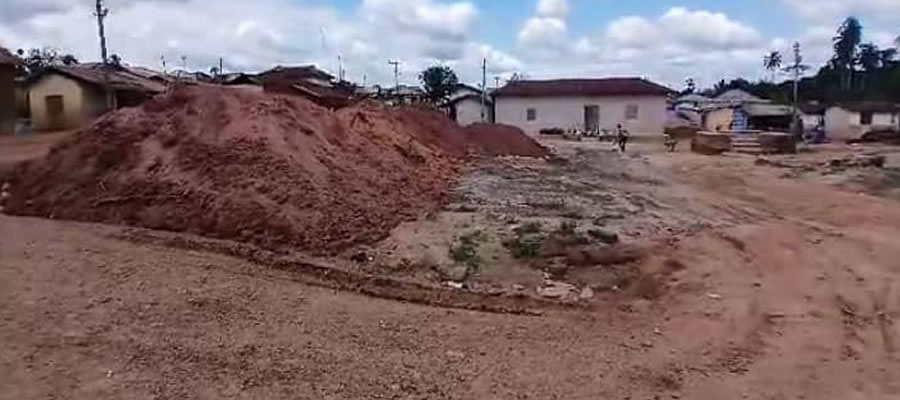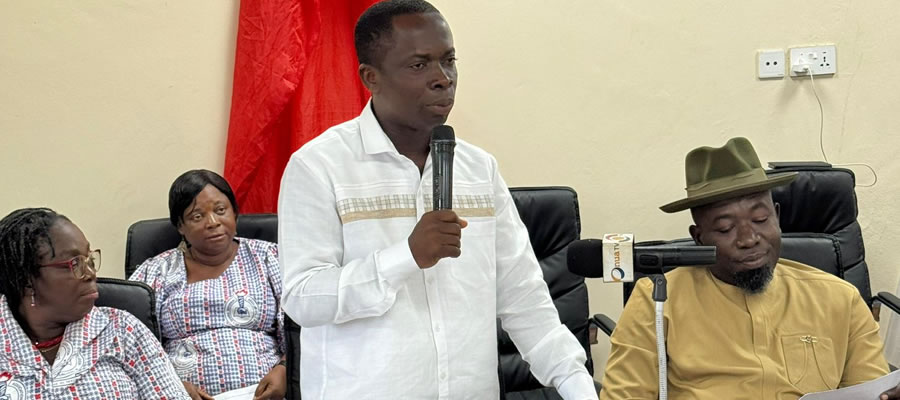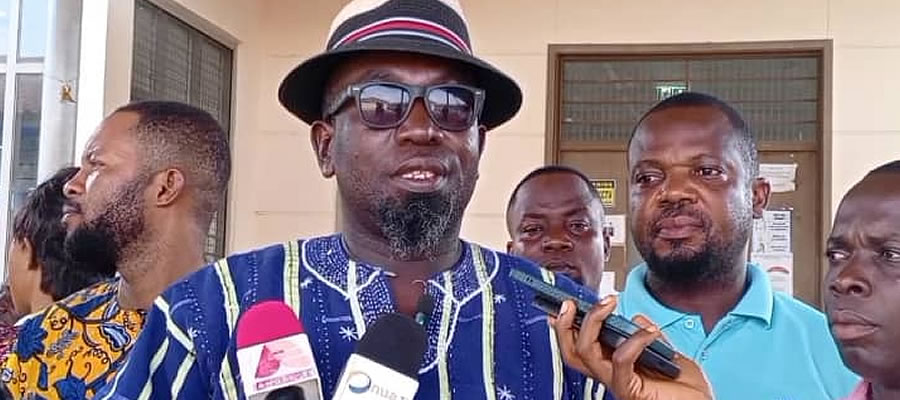

Electricity Power Supply
The district is composed of over 90 communities and hamlets in the district but only 43 of them representing 47.7% are currently connected to the national grid (ECG, Twifo Praso, 2010).This implies that over 50% of the district, although some of the communities are only farmsteads and hamlets, is yet to enjoy the numerous opportunities offered by electricity power.
Road Network
The district is dominated by feeder roads. The district has 205.1 km of feeder road out of which 35.7 km is bitumen surfaced and this includes the Hemang - Baakondidi (7.8 km), Jukwa township (3.5 km), Hemang – Bukruso (9.4 km) and Gyankobo – Abaka Nkwanta (2.0 km). The district is also traversed by an all year motorable 41 km highway from Jukwa – Twifo which forms part of the Cape Coast – Twifo Praso highway. Greater portions of the untarred roads especially the hilly areas of the district are difficult to travelled on during the rainy season, thus, making the transportation of goods especially farm produce very expensive.
Postal and Telecommunication Services
A well developed communication system and efficient postal services are essential for the district’s development through quick and reliable information exchange for smooth governance, social interaction and well-organized business transaction. The existing postal and telecommunication infrastructure in the district are woefully inadequate.There is only one post office at the district capital.However, there exist other postal agencies in the zonal centres and other areas to offer postal services.There exists in the district cellular phone networks and they include MTN, Tigo, Airtel, Vodafone, Kasapa and Globacom. However, their services are available to all the communities.
The district capital and few major towns enjoy the services of land telecommunicatiHowever, with the increase demand for cell phone, private communication centers have reduced considerably in number.There are in the district capital and Jukwa few internet café besides individuals taking advantage of the mobile communication networks internet broadband modems.At the offices of the district administration, computers have been procured for the units and departments to facilitate work. As a new district, it is envisaged that more ICT equipment would be procured to enhance service delivery.
Settlements Systems /District Scalogram
Functional Hierarchy of Settlements and its implications
The Scalogram Analysis is used to indicate the hierarchy of settlements in the district. It shows the distribution of services in the District. The functional Matrix/Scalogram (Fig….) shows the major settlements,the populations and their corresponding services/facilities existing in them. It thus determines the functionality of the settlements in the district. The order of settlements is dependent on the variety of social and economic facilities existing in the settlements.The facilities used in the scalogram analysis as can be seen in the matrix are under the following broad sectors;
- Education
- Health
- Agriculture
- Water and sanitation
- Banking
- Market
- Post and telecommunication
- Security services
- Tourism
- Roads a
- Electricity
From the scalogram analysis services available in the district vary widely.The analysis of the functionality of the settlements revealed that Jukwa, the first order settlement provides more services than all the settlements, including the district capital Hemang which is the second order of settlement. The scalogram shows Twifo Hemang, Jukwa and Wawase are more endowed (in terms of the services available) than those in the hinterland. Again, generally, the settlements along the highway from Jukwa to Hemang are better served with essential services such as schools, health facilities and roads.
Settlements along the highway are also highly populated. This may be explained by the high accessibility to improved and better services be it health, education and commercial activities in and out of the district.This implies that there will be considerable pressure on social facilities in these areas hence; development programmes to be designed should be informed by this perception.From the functional analysis, the settlements along the highway especially Jukwa and Hemang play a dominant role in the provision of services in relation to the other settlements in the District.
Again, they have better links to other towns outside the district and such strong inter-district linkage especially between the rural and urban areas is very necessary to engender development. However, in the case of settlements in the hinterlands the linkage is either weak or sometimes absent such that these areas do not benefit from developments in the centre. The above factors notwithstanding, the high order settlements are inadequately equipped to provide the services required by the rural settlements. The economy of space will require a strategy that can accelerate the pace of urbanization through the provision of urban services to rural areas through functional-spatial integration.
Housing
The total number of houses in the District stands at 8,861. With the district population of 55,131 the number of persons per house is 6.22. On the average, there are 4.5 (approx. 5) persons in each household in the district. This gives an average of 1.4 (approx. 1 household) household per house in the District. Housing stock and quality are often indicators of the level of prosperity or otherwise in a District. As a rural district the hosing problem is more of low quality rather than quantity. Most houses (63%) in the district were constructed with mud.
The dominant roofing materials used in the district for construction are the corrugated iron varieties of aluminium, zinc or asbestos and bamboo. Information available indicated that about 51.4% of the houses were roofed with corrugated iron sheets (aluminium/zinc), 31.4% and 17% of houses had thatch and bamboo respectively.The district has 12,242 households with 8,612 (70.3%) being in the rural communities whilst 3,630 (29.7%) in the urban communities. Basic facilities such as a kitchen are provided in every house. Most people depend on public latrines in the larger towns like Hemang, Jukwa, Wawase and Abrafo-Odumase.
Information And Communication Technology (ICT)
Communication Technology (ICT) refers to technologies that provide access to information through telecommunications. According to the 2010 PHC, a total of 36,374 persons made up of 45.3% males and 54.7% females own mobile phones and internet facilities in the district. Landline telephone ownership and usage in the district has seen major decline due to the advancement of mobile network technology. Again, only 0.2% of households in the district have fixed telephone lines implying that the use of wireless technology (mobile phone and internet) has surpassed the landline phone and may make landline phone uncommon in the future.
Information and Communication Technology (ICT)
Modern information and communication technologies have transformed the world to a "global village," in which people can communicate with others across the world as if they were living next door. Although a rural district, these vital services have provided the district with a vast array of new communication capabilities of which political, cultural, education, health and most importantly greater access to information, communication and fast business transactions derived from ICT.
Internet and telephones services (both cellular and land lines) are however not available in all parts of the district. Notable among these communities and areas include Armah- Kwamoano, Wawase and Paaso – Afiaso - Nsutam –Tweapease, Baakondidi - Shed –Teye Mensah enclaves. This problem poses very serious challenge in the delivery of very vital services including health and also affects the educational standard in these areas. However, the DA does not have it for data collection, storage and retrieval and hence affect critically the access of workers to information for efficient performance
Date Created : 11/23/2017 2:04:22 AM









 facebook
facebook
 twitter
twitter
 Youtube
Youtube
 +233 593 831 280
+233 593 831 280 0800 430 430
0800 430 430 GPS: GE-231-4383
GPS: GE-231-4383 info@ghanadistricts.com
info@ghanadistricts.com Box GP1044, Accra, Ghana
Box GP1044, Accra, Ghana